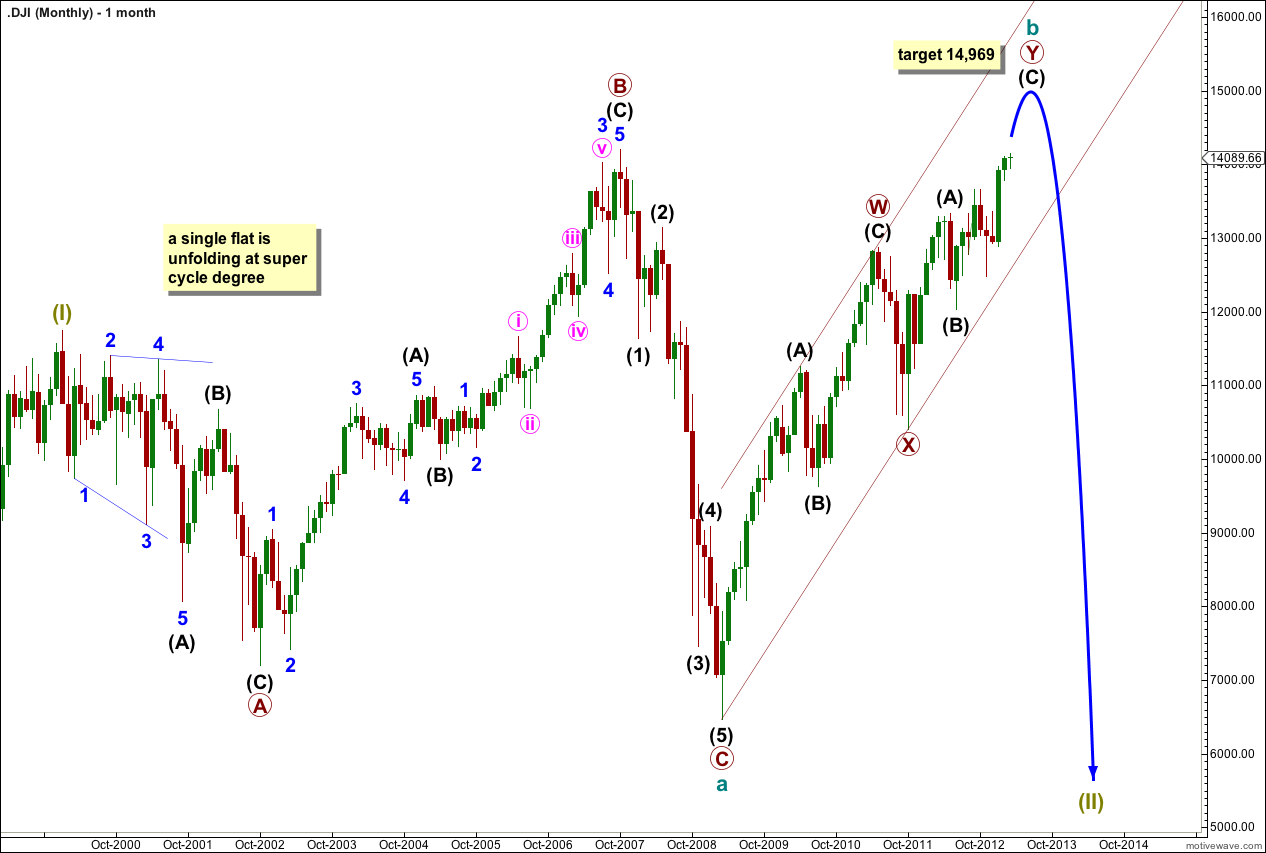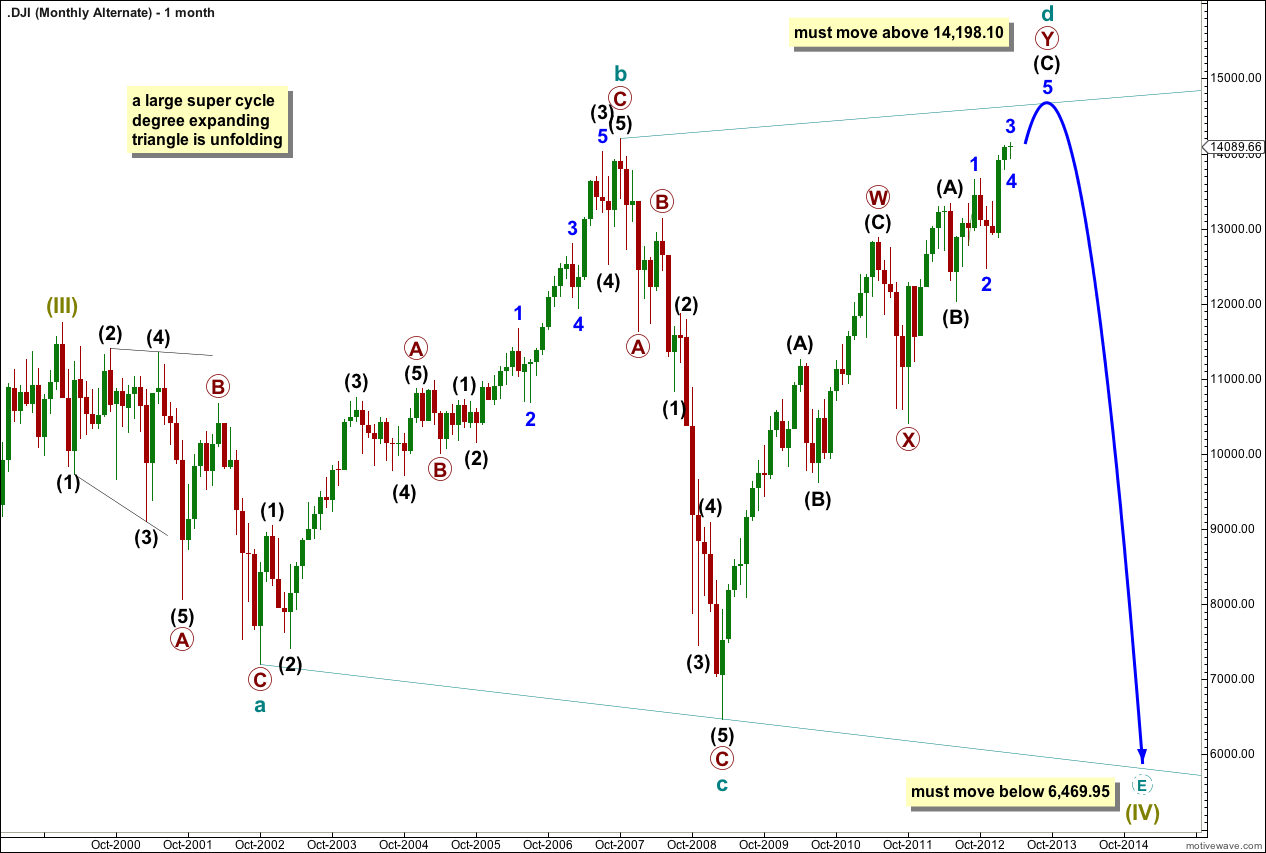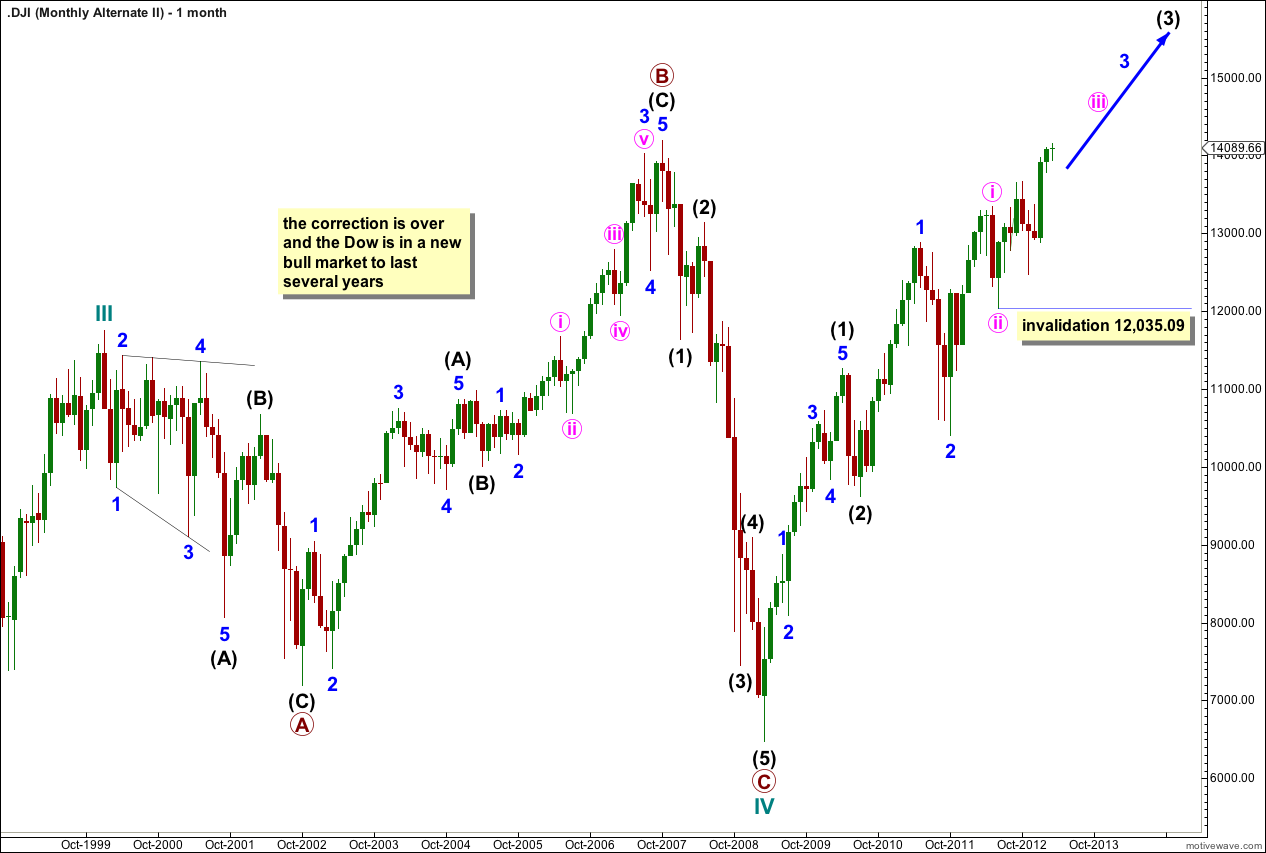I have changed the main monthly wave count from a double flat to a single flat. It has a much better fit for recent movement, particularly the rise from 6,469.95.
The alternates remain the same.
Main Monthly Wave Count.
The last monthly wave count saw a double flat unfolding at super cycle degree. This new monthly wave count sees a single flat unfolding at super cycle degree.
Within the single flat correction cycle wave a is a three wave structure, an expanded flat correction. Within it primary wave B is a 154% correction of primary wave A, and primary wave C is 362 points longer than 1.618 the length of primary wave A (a 4.7% variation which is acceptable).
Cycle wave b passed 105% the length of cycle wave a at 12,014 so the structure at super cycle degree is most likely to be an expanded flat. We would expect cycle wave c to be 1.618 the length of cycle wave a, about 8,544 points in length.
Cycle wave b is an incomplete double zigzag structure. The second zigzag, primary wave Y is incomplete. At 14,969 intermediate wave (C) would reach equality in length with intermediate wave (A).
We may draw a parallel channel about cycle wave b. When this channel is clearly breached by downwards movement then we shall have trend channel confirmation of a trend change at cycle wave degree. At that stage we may have a lot of confidence that price is in a new downwards trend extremely likely to make a new low below 6,469.95 to avoid a truncation and a rare running flat.
Alternate Monthly Wave Count.
The probability of this alternate must remain very low because this structure is extremely rare. In my years of Elliott wave analysis of up to five markets a day I have only ever seen two (very possibly three) expanding triangles.
However, at this stage the expectation for a new high, the target, short term invalidation and expectation for a new low to follow this are exactly the same for this alternate and the main monthly wave count. Only the structure of cycle wave c downwards differs; this alternate expects a zigzag and the main monthly wave count expects a five wave structure.
A large super cycle expanding triangle may be unfolding. This would be most likely for a super cycle wave IV.
Four of the five subwaves of a triangle must be zigzags or zigzag combinations (doubles). Thus cycle wave c may be an impulse.
Within a triangle one of the five subwaves should be more complicated and longer lasting than the others. This is usually wave c of the triangle, but in this instance it may be cycle wave d which is subdividing into a double zigzag.
Within cycle wave d the first zigzag in the double, primary wave W, is complete. The double is joined by a three in the opposite direction labeled primary wave X. The second zigzag in the double is underway labeled primary wave Y.
An expanding triangle requires cycle wave d to move beyond the end of cycle wave b above 14,198.10.
Within primary wave Y intermediate (black) wave (A) must be seen as a five wave structure. At 14,969 intermediate wave (C) would reach equality with intermediate wave (A).
Within intermediate wave (C) wave 2 may not move beyond the start of wave 1. This wave count is invalidated in the mid term with movement below 12,035.09.
When cycle wave d has made a new high then cycle wave e downwards must complete the triangle. Cycle wave e must subdivide into a zigzag and must take price to a new low below the end of cycle wave c below 6,469.95. Cycle wave e should be another crash as spectacular, or more so, then the “credit crunch” of cycle wave c.
Second Alternate Monthly Wave Count.
I have moved the labeling of this wave count all down one degree.
This second alternate wave count is the same (in that the subdivisions are the same) as the main monthly wave count up to the low of 6,469.95 here labeled cycle wave IV except it is looking at the possibility that this was the end of a cycle degree fourth wave correction, an expanded flat, and that the Dow is now in a new upwards trend to last about several years for cycle wave V.
Within cycle wave V primary wave 1 is incomplete.
Although minor waves 1 and 2 are out of proportion to intermediate waves (1) and (2), one degree higher, this is less problematic than trying to see the upwards movement from the low at 6,469.95 to the high labeled minor wave 1 at 12,876 as a five wave structure.
If this wave count is correct then the Dow is approaching the middle of a third wave which has just begun. It should increase upwards momentum significantly in the coming weeks and couple of months. This does not fit with persistent divergence on MACD and social mood.
Within minute wave iii no second wave correction may move beyond the start of its first wave. This alternate is invalidated with movement below 12,035.09.



